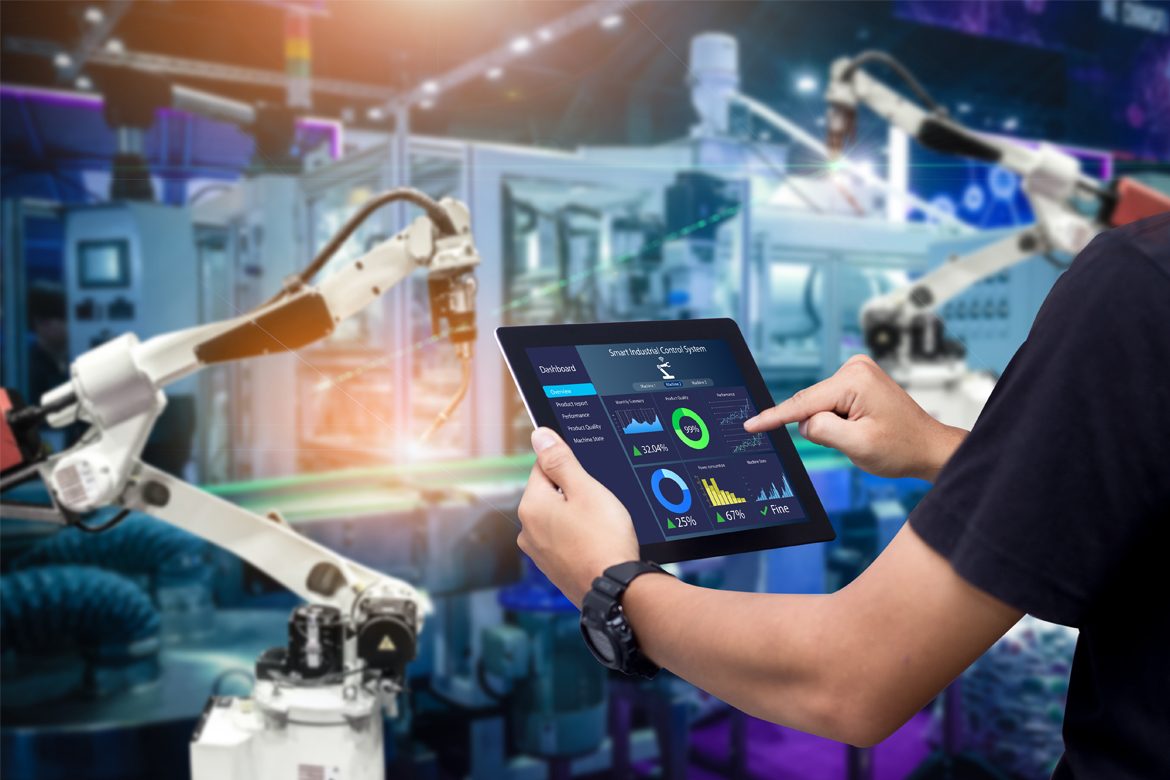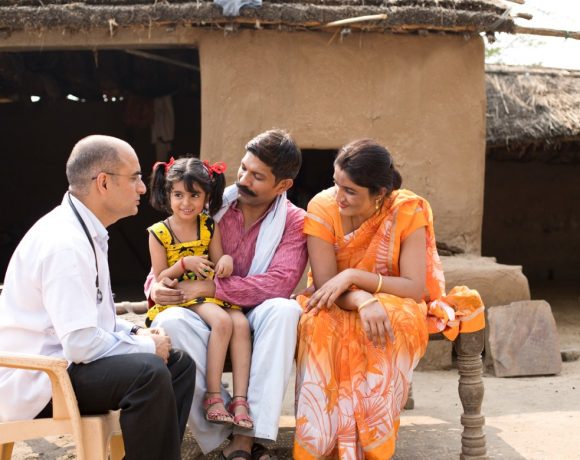- The digital revolution and associated new technologies like Artificial Intelligence and Machine Learning, robotics and wearable sensors give us excellent tools to prevent, detect, treat and monitor diseases.
- Mobile devices have a high rate of acceptance, even in the older generation, and are today almost ubiquitously distributed. They are therefore excellent tools to provide healthcare in different ways. The current generation of smartphones have, among others, integrated powerful sensors and components including camera, GPS, voice recording systems and internet access which allows easy capturing and sharing of data.
- A quality check and approval by regulators are essential to make such devices trustworthy, effective and reliable. Privacy issues centred on accessibility, use and storage of personal data are today a major concern and need highest attention.
This article was originally published in Express Healthcare.
Societies age rapidly worldwide. This shift in demographics towards a much higher portion of older people is correlated with a prognosed dramatic increase in chronic diseases and will aggravate the shortage in healthcare professionals. A large fraction of these patients do not require acute care, but constant monitoring and surveillance.
The digital revolution and associated new technologies like Artificial Intelligence and Machine Learning, robotics and wearable sensors give us excellent tools to face this health challenge, allowing prevention, early detection, treatment and monitoring of diseases.
As they are mobile, they allow the detachment of the patient from a physical space or from direct contact with a healthcare professional (HCP).
In the near future, we will witness the following technologies change the face of digital mobile health. Fair warning, this is only a small selection of the variety of devices and fields of applications.
Chatbots and artificial intelligence software can simulate a conversation with a user in natural language through messaging applications, websites, mobile apps or through the telephone. They allow a tailor-made inaction with individual patients and steer them in an engaging way. The chatbot can play the role of a physical, mental, and social health consultant. Applications can cover a broad range of health issues. It can help cancer survivors to better cope with the long-term consequences of their disease, it can accompany obese children in losing weight, or it can be also act as a care provider for elderly people with a voice system.
Robotic devices can support patients in their therapies during the continuum of care. Let’s take the example of stroke rehabilitation. These devices could be of aid from the acute phase at the hospital to the private home for a long-term therapy at home. Instead of regular visits at care centres, which often means a huge effort and burden for elderly people with restricted physical capacities, patients can use such devices at home and improve their functional capacities.
Sensors are devices that detect physical, chemical, and biological signals and provide a way for those signals to be measured and recorded. For example, they can be used to analyze gait patterns as a highly sensitive indicator for frailty and fall risk, as well as for the early detection of neurodegenerative disease onset like Parkinson’s disease.
These technologies come with a great deal of opportunities and challenges.
Easy data collection, like never before
The use of mobile devices has progressively become ubiquitous all over the world. Nowadays, the number of mobile devices exceeds the world population by far, and their multiplying rate is several times higher. This is also the case for low and middle-income countries, where the smartphone ownership nearly doubled in the last few years.
The current generation of smartphones have, among others, integrated powerful sensors and components including camera, GPS, voice recording systems and internet access which can be used for healthcare. This allows capturing of data, of the individual carrying the device such as photo, video and voice recording, measurement of physiological parameters, as well as physical activities. Data can be shared remotely across people and countries around the globe.
Faster remote diagnosis leads to faster cure
Mobile devices have a high rate of acceptance, even in the older generation, and are today almost ubiquitously distributed. They are therefore excellent tools to provide healthcare in different ways, allowing e.g. remote diagnosis of skin diseases via photos or videos, virtual personalized communication between a patient and a healthcare professional, monitoring of disease parameters as blood sugar to monitor diabetes.
Efficiency in terms of cost and reach
These remote application facilities make healthcare provision via mobile devices also cost-effective, as the need to visit an acute care hospital or physician is reduced. This allows access to healthcare also to people living in remote areas and persons with restricted mobility.
Lack of proper regulatory frameworks
The quality of any healthcare intervention through digital devices relies on the effectiveness and reliability of the device itself. Therefore, a quality check and approval by regulators are essential to make such devices trustworthy, effective and reliable. In many places, however, clear legal and regulatory frameworks are not yet in place.
Data privacy
Privacy issues centred on accessibility, use and storage of personal data are today a major concern and need highest attention.
Geographical and cultural adaptations
As in traditional healthcare delivery, the geographical, cultural and eventually religious context plays an essential role. E.g. installing a robot for arm rehabilitation in a private home of a stroke patient in Singapore might cause a huge challenge as the living space per person is limited, and the size of the device might make it very difficult to install. Tailor-made solutions adapted to local requirements are therefore needed.
Ease of use for the elderly
Although digital literacy is quite high, also among the elder population, it still needs attention allowing the use of such devices in an easy, intuitive manner.
Adherence to compliance
Adherence and compliance is another huge challenge. Humans tend not to maintain consistency in adhering to regular interventions needed to make a healthcare intervention effective. The quality of interaction, e.g. the design and delivery of chat in a chatbot is therefore essential for adherence.
Overall, it is generally acknowledged that digital technology has the power to be a game changer in prevention, diagnosis, and treatment. It has the potential not only to revolutionise healthcare provision, but can also have a cost-cutting effect and can absorb the increasing shortage of healthcare professionals. As with every disruptive technology advancement, expectations are very high and the real-world value still needs to be proven in many areas. These technologies highly depend on technical prerequisites and robust and reliable infrastructure. The disparity in the quality of the infrastructure available in many parts of the world will lead to inconsistencies in the chances to profit from these, causing even more inequality in healthcare provision.
And in the end, the expertise, the personal intervention, the human touch and empathy of healthcare professionals cannot be replaced by any technology. They will face a potentially dramatic change in their roles, but they will remain essential in delivering a human-centred, empathic healthcare.
References:
Deloitte: connected health- how digital technology is transforming health and social care https://www2.deloitte.com/content/dam/Deloitte/uk/Documents/life-sciences-health-care/deloitte-uk-connected-health.pdf
https://www.ncbi.nlm.nih.gov/pmc/articles/PMC6106116/
Mobile technology and the digitization of healthcare
Sanjeev P. Bhavnani,1 Jagat Narula,2 and Partho P. Sengupta2,*
Eur Heart J. 2016 May 7; 37(18): 1428–1438.
Published online 2016 Feb 11. doi: 10.1093/eurheartj/ehv770
PMCID: PMC4914890
PMID: 2687309
Mobile Statistics. [Last assessed on 2018 Jul 21]. Available from: https://www.independent.co.uk/life-style/gadgets-and-tech/news/there-are-officially-more-mobile-devices-than-people-in-the-world-9780518.html.
Pew Global. [Last assessed on 2018 Jul 21]. Available from: http://www.pewglobal.org/2016/02/22/smartphone-ownership-and-internet-usage-continues-to-climb-in-emerging-economies/
WHO: digital health and innovation: https://www.who.int/health-topics/digital-health#tab=tab_1
Ventola CL. Mobile devices and apps for health care professionals: Uses and benefits. P T. 2014;39:356–64. [PMC free article] [PubMed] [Google Scholar]






NO COMMENT